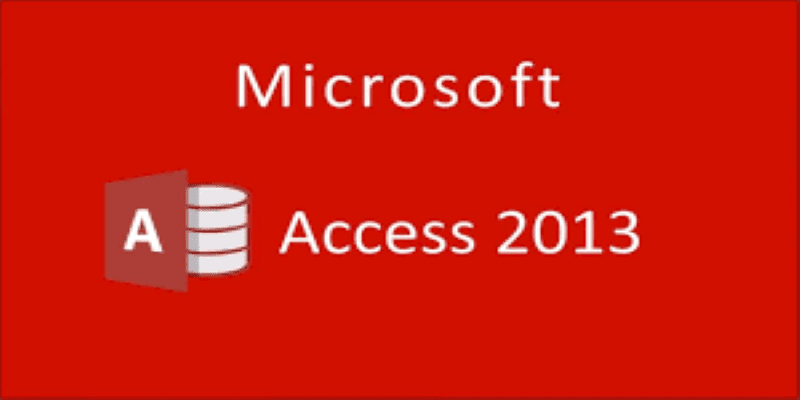
About Course
Microsoft Access 2013 and VBA. When you create a new database, you typically begin by creating several database objects such as tables, forms, and reports. Eventually, you reach a point where you have to add some programming to automate certain processes and tie your database objects together. This article helps orient you to the programming tools in Access.
What is programming?
In Access, programming is the process of adding functionality to your database by using Access macros or Visual Basic for Applications (VBA) code. For example, suppose that you have created a form and a report, and you want to add a command button to the form that, when clicked, opens the report. Programming, in this case, is the process of creating a macro or VBA procedure and then setting the command button’s OnClick event property so that clicking the command button runs the macro or procedure. For a simple operation, such as opening a report, you can use the Command Button Wizard to do all the work or turn off the wizard and do the programming yourself.
Objects (such as forms and reports) and controls (such as command buttons and text boxes) have various event properties to which you can attach macros or procedures. Each event property is associated with a specific event, such as clicking the mouse, opening a form, or modifying data in a text box. Events can also be triggered by factors outside of Access, such as system events or macros, or procedures attached to other events. Your database can get complex if you add many macros or procedures to several event properties of many objects. Still, in most cases, you can achieve the results you want by using very little programming.
Should I use macros, or should I use VBA code?
The decision to use macros, VBA, or both depends primarily on how you plan to deploy or distribute the database. For example, if the database is stored on your computer and you are the sole user, and if you are comfortable using VBA code, you might decide to use VBA to perform most of your programming tasks. However, if you intend to share your database with other people by locating it on a file server, you might want to avoid using VBA for security considerations.
Course Content
Programming in Microsoft Access 2013 and VBA
-
1. Introduction
00:00 -
2. Building Our First Table
00:00 -
3. Options For Our Data
00:00 -
4. Entering Data In Our Table
00:00 -
5. Organizing Our Data
00:00 -
6. Relationship Mapping
00:00 -
7. Many To Many Relationships
00:00 -
8. Combining What We Know
00:00 -
9. Finishing Up Our Relationships
00:00 -
10. Queries
00:00 -
11. First SELECT Query
00:00 -
12. Filtering Our Data
00:00 -
13. Concatenation and Totals
00:00 -
14. Subqueries
00:00 -
15. Make Table and Insert Queries
00:00 -
16. Update Queries
00:00 -
17. Delete Query
00:00 -
18. Introduction To Forms
00:00 -
19. Building Our First Form
00:00 -
20. Modifying Our Form – Part 1
00:00 -
21. Modifying Our Form – Part 2
00:00 -
22. Filtering Our Form
00:00 -
23. Reports
00:00 -
24. Report Header and Footer
00:00 -
25. Report Grouping and Calculations
00:00 -
26. VBA – Grouping Our Code
00:00 -
27. VBA – Variables And Data Types
00:00 -
28. VBA – Writing Our First Code
00:00 -
29. VBA – If Statement
00:00 -
30. VBA – If Statement Part 2
00:00 -
31. VBA – Nested If’s and Select Case
00:00 -
32. VBA – Looping Statements
00:00 -
33. VBA – Frames and Arithmetic
00:00 -
34. VBA – Arrays
00:00 -
35. VBA – Creating A Login Screen
00:00 -
36. VBA – Debugging and Error Handling
00:00 -
37. VBA – Functions and Subroutines
00:00 -
38. VBA – Passing Arguments to Parameters
00:00 -
39. VBA – Access Modifiers
00:00 -
40. VBA – DoCmd
00:00 -
41. VBA – CurrentProject
00:00 -
42. VBA – CurrentDB
00:00 -
43. VBA – SysCmd
00:00 -
44. VBA – Environ
00:00 -
45. VBA – Application Part 1
00:00 -
46. VBA – Application Part 2 Programming In Access 2013
00:00 -
47. VBA – Classes
00:00 -
48. VBA – Class Properties
00:00 -
49. VBA – Class Constructors And Destructors
00:00 -
50. VBA – Class Methods & Alternative Constructor
00:00 -
51. VBA – Custom Events
00:00 -
52. VBA – Custom Events Example
00:00 -
53. VBA – Recordsets Part 1
00:00 -
54. VBA – Recordsets Part 2
00:00 -
55. VBA – Recordsets Part 3
00:00 -
56. Creating A Classic Login Form
00:00 -
57. Splitting Our Database
00:00 -
58. Encrypting Your Data File
00:00 -
59. Securing Your Front End
00:00 -
60. Hashing Passwords
00:00 -
61. SQL SELECT Statement
00:00 -
62. SQL JOIN Statement
00:00 -
63. SQL WHERE Statement
00:00 -
64. SQL WHERE Simple Operators
00:00 -
65. SQL WHERE Complex Operators
00:00 -
66. SQL – The IN Operator
00:00 -
67. SQL – The EXISTS Operator
00:00 -
68. SQL Access Subqueries
00:00 -
69. SQL Using Subqueries to Improve Performance
00:00 -
70. SQL Using Aggregate Functions
00:00 -
71. SQL Using Aggregates and Subqueries Together
00:00 -
72. SQL Make A New Table From A SELECT Query
00:00 -
73. SQL Appending Rows Using INSERT INTO
00:00 -
74. SQL Adding Only New Rows With INSERT INTO
00:00 -
75. SQL UPDATE Query
00:00 -
76. SQL DELETE Query
00:00 -
77. DLookup And Domain Aggregates
00:00 -
78. Conclusion & Advanced Series
00:00
Student Ratings & Reviews

